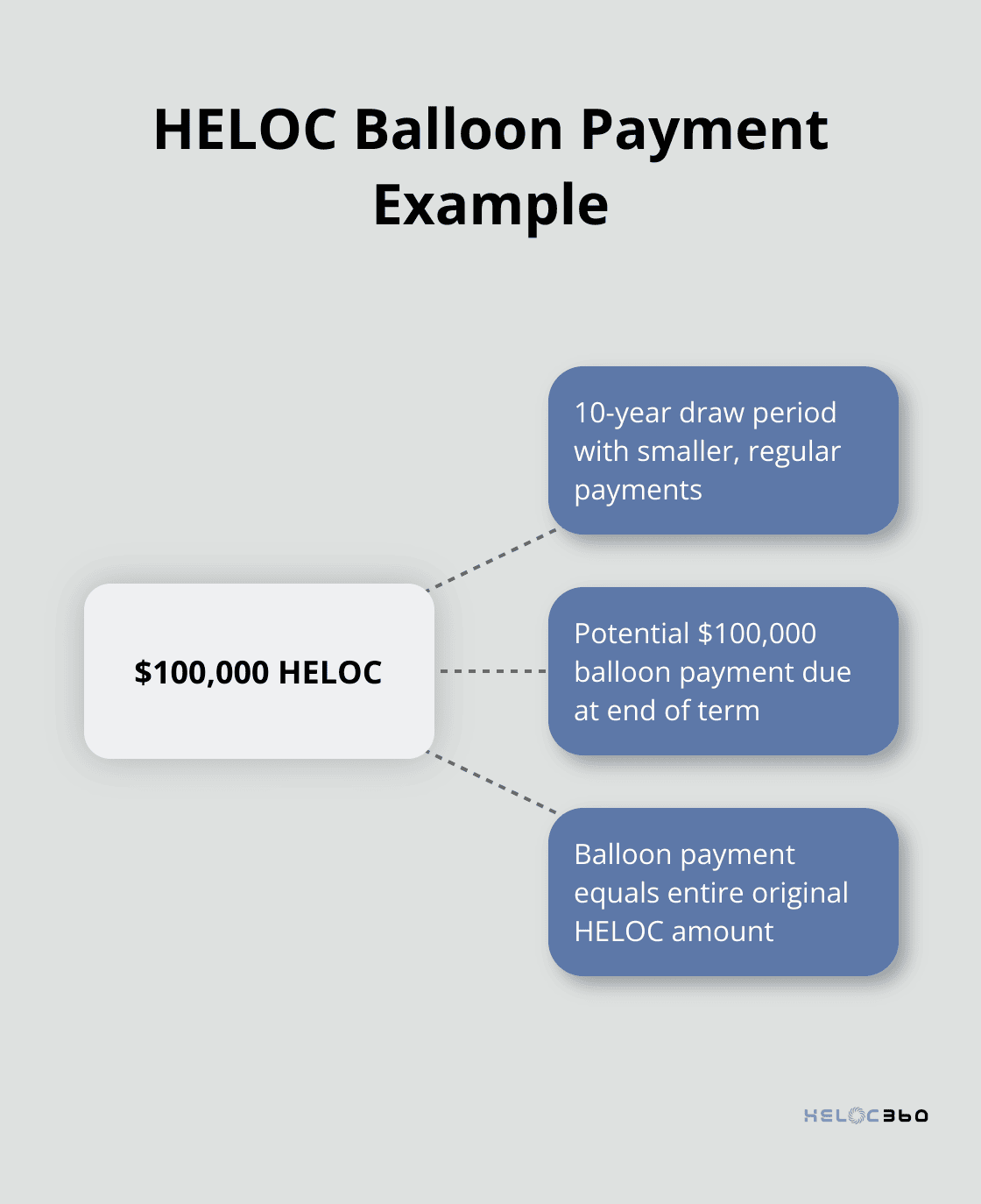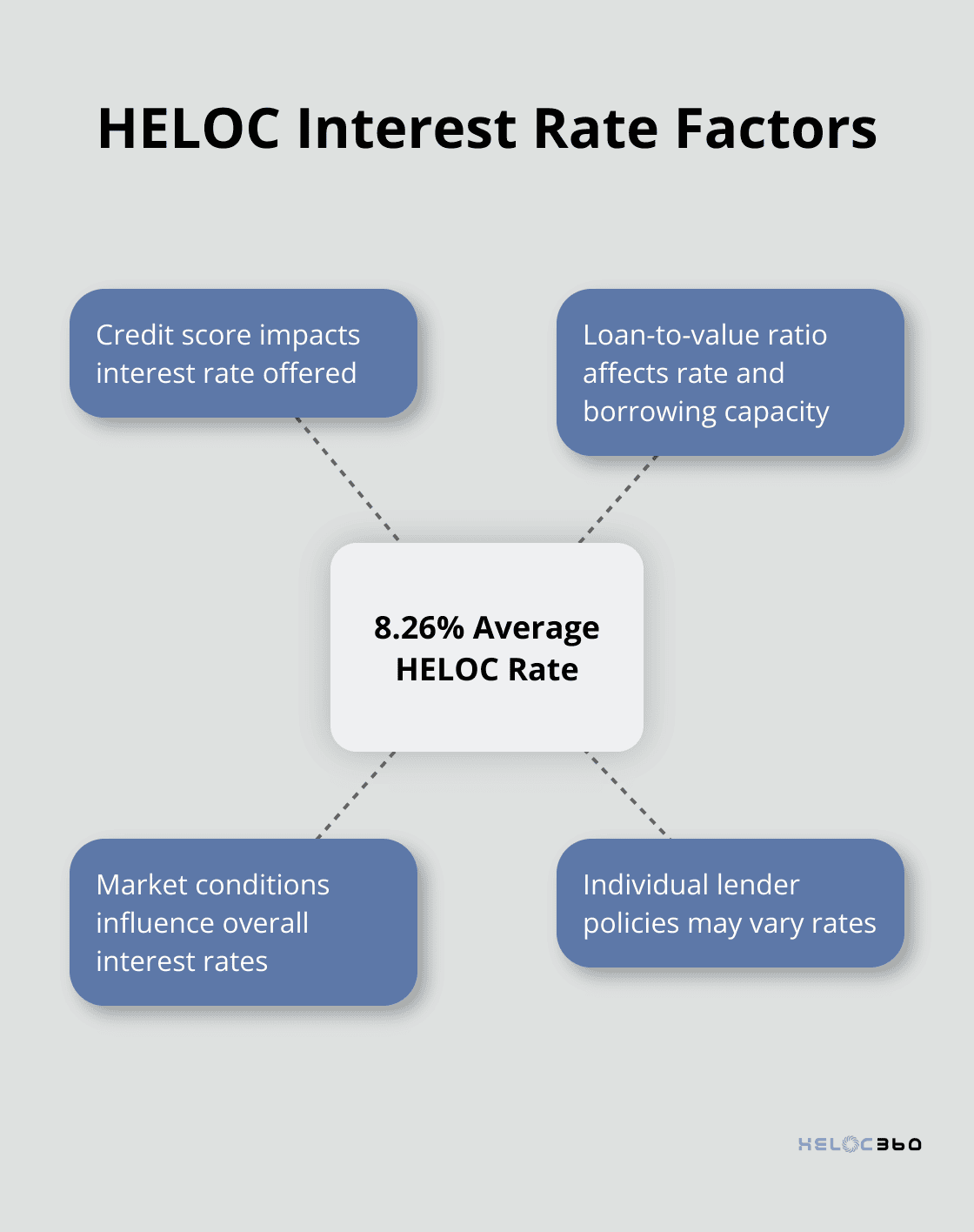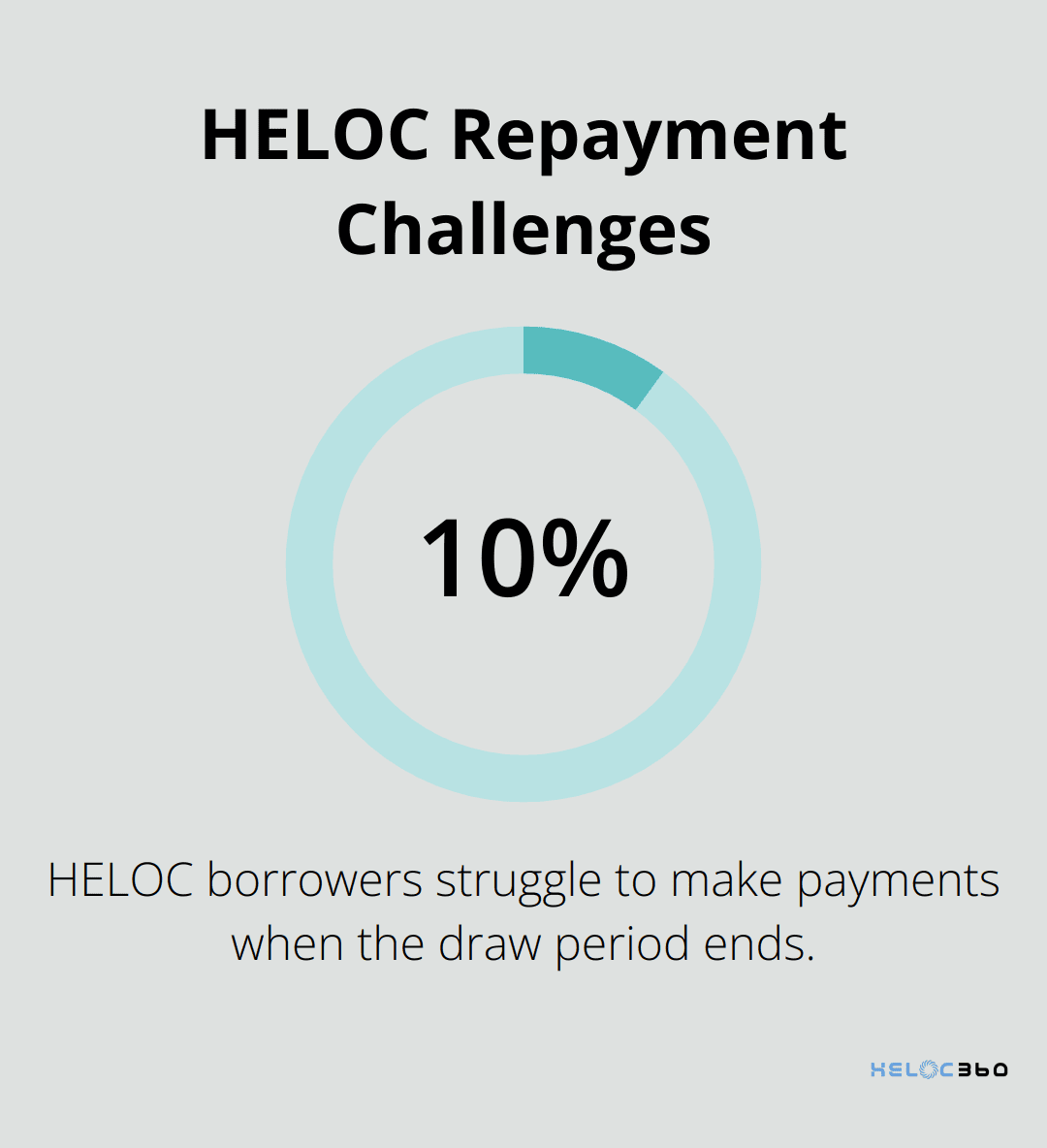At HELOC360, we understand that HELOC balloon payments can catch homeowners off guard. These large, lump-sum payments due at the end of your HELOC term can significantly impact your financial planning.
In this post, we’ll explore what HELOC balloon payments are, how to prepare for them, and the potential risks they pose. We’ll also provide strategies to help you navigate this aspect of your home equity line of credit with confidence.
What Is a HELOC Balloon Payment?
Definition and Structure
A HELOC balloon payment is a large, one-time payment required at the end of your home equity line of credit term. This payment covers the remaining balance of your HELOC, which can be substantial if you’ve made only minimum payments during the draw period. A balloon payment might require you to pay the entire balance owed, all at once, which could be a large amount.
Contrast with Regular HELOC Payments
Unlike regular HELOC payments (which are typically smaller and more frequent), a balloon payment is a lump sum that can surprise many homeowners. For instance, if you have a $100,000 HELOC and have made interest-only payments during a 10-year draw period, you might face a $100,000 balloon payment at the end of the term.

Lender Motivations
Lenders include balloon payments in HELOC terms for several reasons:
- It allows them to offer lower monthly payments during the draw period, making the HELOC more attractive to borrowers.
- It reduces the lender’s long-term risk by ensuring the loan is paid off in full by a specific date.
Financial Impact on Homeowners
Balloon payments can significantly affect a homeowner’s financial planning. A $50,000 balloon payment due in five years requires saving about $833 per month (which can challenge many households). This underscores the importance of carefully reviewing HELOC terms and planning accordingly.
Preparation Strategies
To avoid financial strain, start preparing for your balloon payment well in advance. Consider these strategies:
- Make principal payments during the draw period to reduce the final balance.
- Refinance your HELOC before the balloon payment is due, converting it to a fixed-rate loan with more manageable payments.
Understanding your HELOC’s structure, including any balloon payment, is essential for effective financial planning. This knowledge empowers you to take proactive planning steps to manage your home equity responsibly and avoid surprises. As we move forward, let’s explore specific strategies to prepare for your HELOC balloon payment and minimize its impact on your financial health.
How to Prepare for a HELOC Balloon Payment
Start Saving Early
Preparing for a HELOC balloon payment requires careful planning and strategic financial management. The key to managing a balloon payment is to start saving well in advance. Typically, you’ll have 20 years to repay the loan balance. However, some HELOCs require a balloon payment of the entire balance plus accrued interest at the end of the repayment period.
Consider automating these savings by setting up a dedicated high-yield savings account. A study by America Saves shows that individuals who use automatic savings are more likely to report making good progress on saving. Treat your balloon payment savings like a monthly bill to increase your chances of sticking to your plan.
Explore Refinancing Options
Refinancing your HELOC before the balloon payment is due can be a smart move. You might convert your HELOC to a fixed-rate home equity loan, which typically offers more predictable payments. Alternatively, you could refinance into a new HELOC with different terms.
When exploring refinancing options, pay close attention to interest rates and fees. As of July 30, 2025, the national average HELOC interest rate is 8.26%, according to Bankrate’s latest survey of the nation’s largest home equity lenders (though rates can vary significantly based on your credit score, loan-to-value ratio, and other factors).

Consider a Home Equity Conversion
If you’re 62 or older, a home equity conversion mortgage (HECM), also known as a reverse mortgage, might be worth considering. This option allows seniors 62 and older to convert the equity in their homes into cash without making monthly mortgage payments. Instead, the loan becomes due when you sell the home, move out, or pass away.
However, HECMs come with their own set of pros and cons. According to the National Reverse Mortgage Lenders Association, only about 1% of eligible homeowners choose this option. It’s important to thoroughly understand the terms and implications before proceeding.
Make Extra Payments During the Draw Period
If possible, make more than the minimum payments during your HELOC’s draw period. This strategy can significantly reduce the balance you’ll owe when the balloon payment comes due. Even small additional payments can make a big difference over time.
For example, if you have a $100,000 HELOC with a 10-year draw period and 5% interest rate, paying an extra $100 per month could reduce your final balance by over $15,000. This approach not only lessens the burden of the balloon payment but also saves you money on interest over the life of the loan.
While these strategies can help you prepare for your HELOC balloon payment, it’s equally important to understand the potential risks associated with these large lump-sum payments. Let’s explore these risks in the next section to give you a comprehensive view of HELOC balloon payments.
The Hidden Dangers of HELOC Balloon Payments
HELOC balloon payments can pose significant financial risks if not properly managed. These large, lump-sum payments due at the end of your HELOC term can disrupt your financial stability and potentially jeopardize your homeownership. Let’s examine the key risks associated with HELOC balloon payments and how they can impact your financial well-being.
Financial Strain and Budget Disruption
HELOC balloon payments can cause severe financial strain, especially if you’re unprepared. For instance, if you have a $100,000 HELOC with a balloon payment due after 10 years, you might face a six-figure bill that could derail your budget and savings plans. This sudden expense can force you to make difficult financial decisions, such as using retirement savings or selling valuable assets.
A study by the Federal Reserve Bank of New York found that about 10% of HELOC borrowers struggle to make payments when their draw period ends and repayment begins. This percentage could be even higher for those facing large balloon payments.

Risk of Default and Foreclosure
Failure to make your balloon payment can have serious consequences. If you default on your HELOC, your lender may initiate foreclosure proceedings, putting your home at risk. According to recent data, the percentage of all-cash buyers in the real estate market has significantly increased, potentially impacting foreclosure rates.
To avoid this scenario, you should have a solid repayment plan in place well before your balloon payment is due. This might involve refinancing your HELOC, selling your home, or exploring other financing options.
Credit Score Impact
Your credit score can take a significant hit if you struggle with or miss your balloon payment. Late payments on a HELOC can stay on your credit report for up to seven years, potentially affecting your overall credit profile. This can affect your ability to secure future loans, credit cards, or even rent an apartment.
Moreover, a lower credit score due to HELOC payment issues can lead to higher interest rates on future borrowing, costing you thousands of dollars over time. For example, a significant drop in your credit score could increase the interest rate on future mortgages or loans, resulting in additional interest over the life of the loan.
Long-Term Financial Planning Challenges
HELOC balloon payments can disrupt long-term financial plans. The need to save for a large lump-sum payment can interfere with other financial goals, such as retirement savings or college funds for children. This can lead to a ripple effect on your overall financial health, potentially impacting your ability to achieve other important life milestones.
Market Fluctuations and Property Value
The value of your home plays a significant role in your ability to manage a HELOC balloon payment. If property values decline, you might find yourself with less equity than anticipated, making it more difficult to refinance or sell your home to cover the balloon payment. This situation (known as being “underwater” on your mortgage) can severely limit your options when the balloon payment comes due.
Final Thoughts
HELOC balloon payments can significantly impact your financial future. These large, lump-sum payments at the end of your HELOC term can strain your budget, potentially lead to default or foreclosure, and affect your credit score. They can also disrupt long-term financial plans and become more challenging to manage if property values decline.
Early preparation will help you successfully navigate a HELOC balloon payment. You should understand your HELOC terms, including the exact amount and due date of your balloon payment. You can create a solid savings plan, treat your balloon payment like a monthly bill, and explore refinancing options to manage your HELOC balloon payment more effectively.
We at HELOC360 want to help you make informed choices about your home equity. Our platform provides tailored solutions to help you unlock the full potential of your home’s value (whether you’re looking to fund renovations, consolidate debt, or create financial flexibility). Don’t let a HELOC balloon payment catch you off guard – take control of your financial future today with HELOC360.
Our advise is based on experience in the mortgage industry and we are dedicated to helping you achieve your goal of owning a home. We may receive compensation from partner banks when you view mortgage rates listed on our website.
